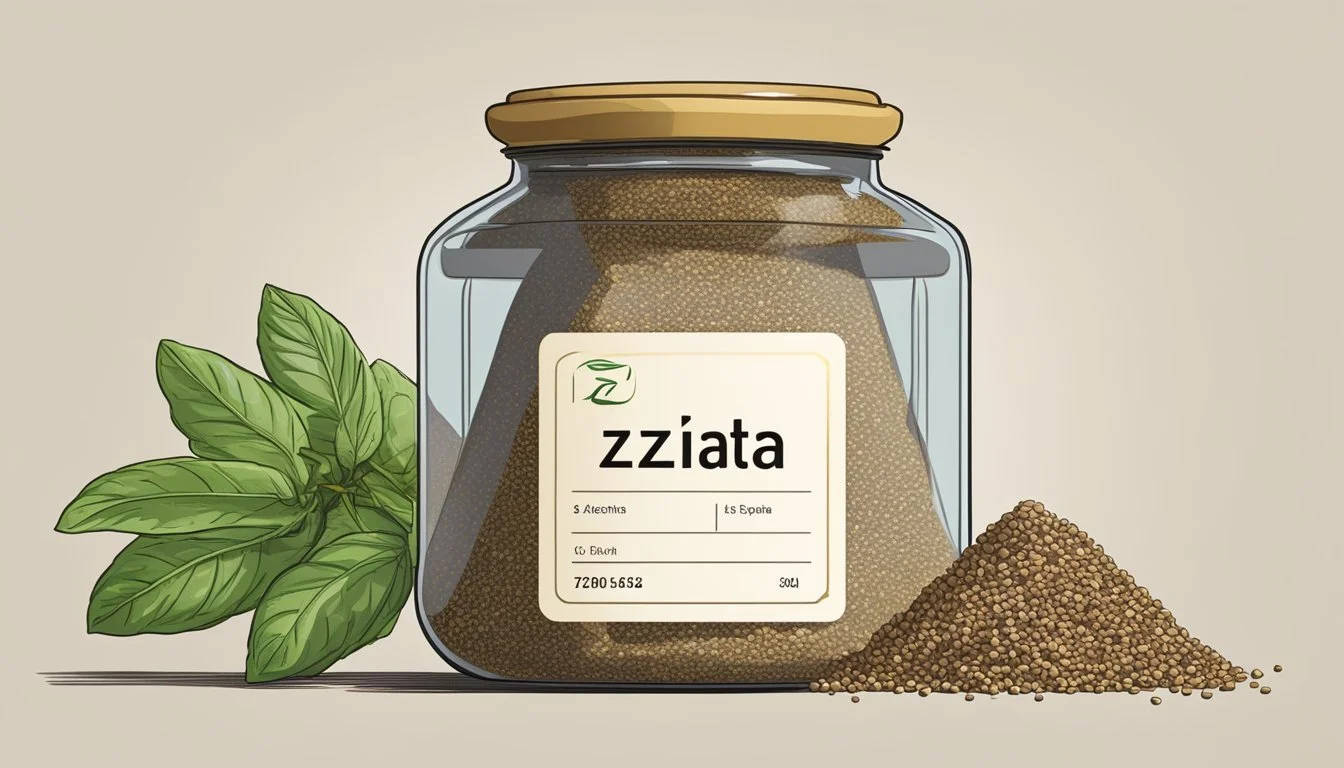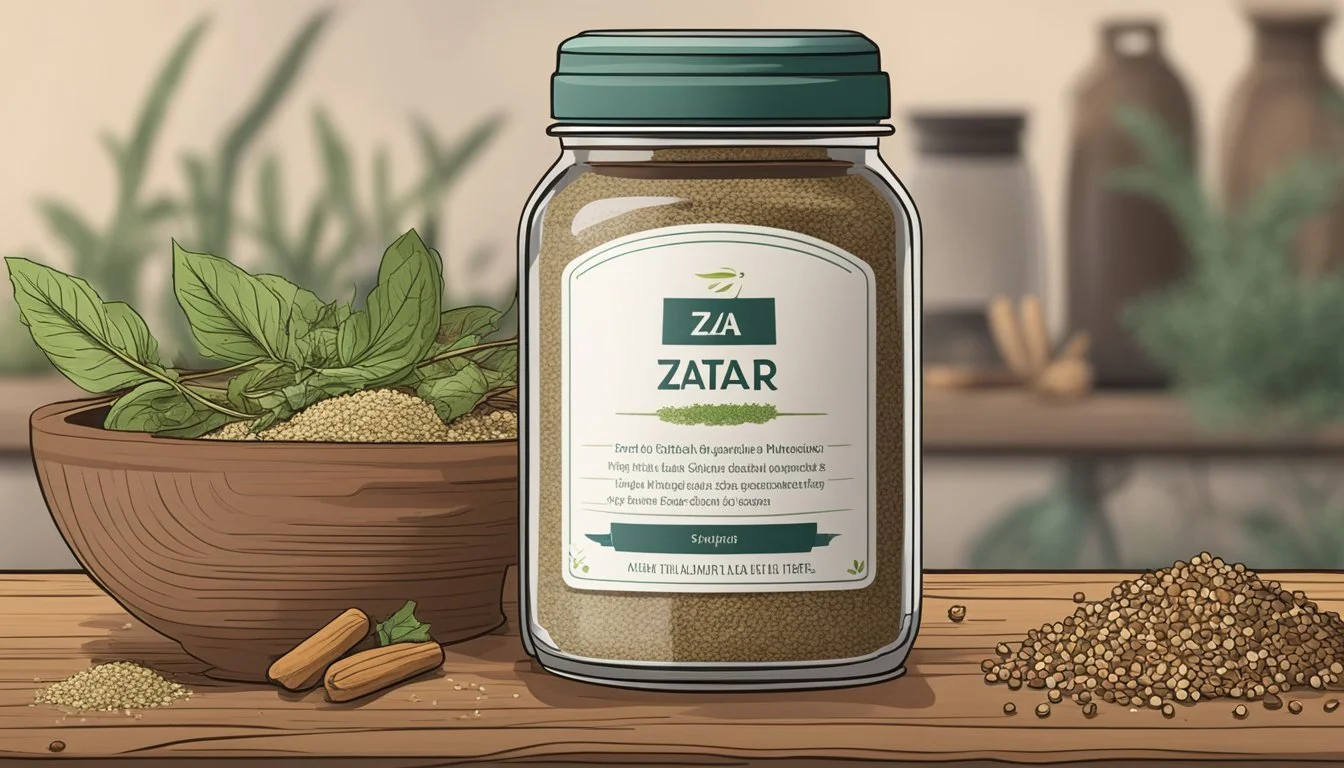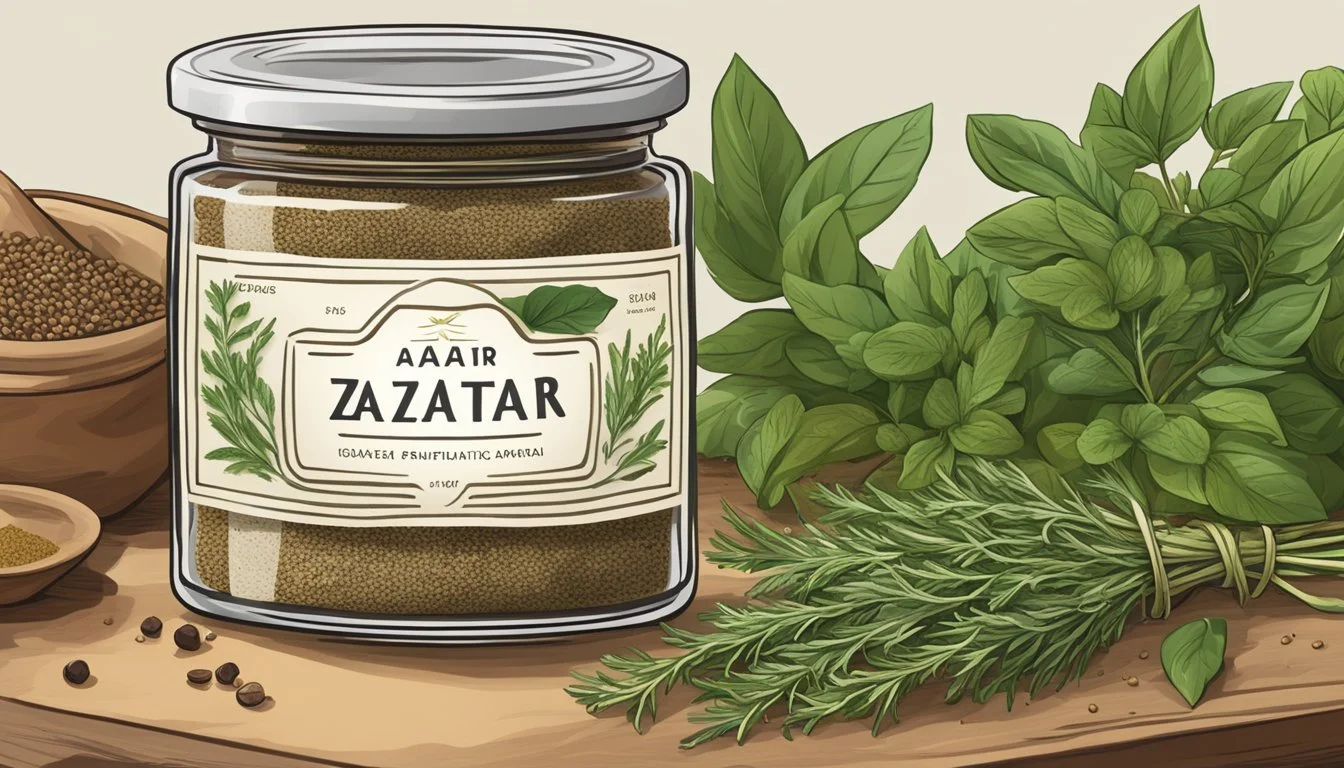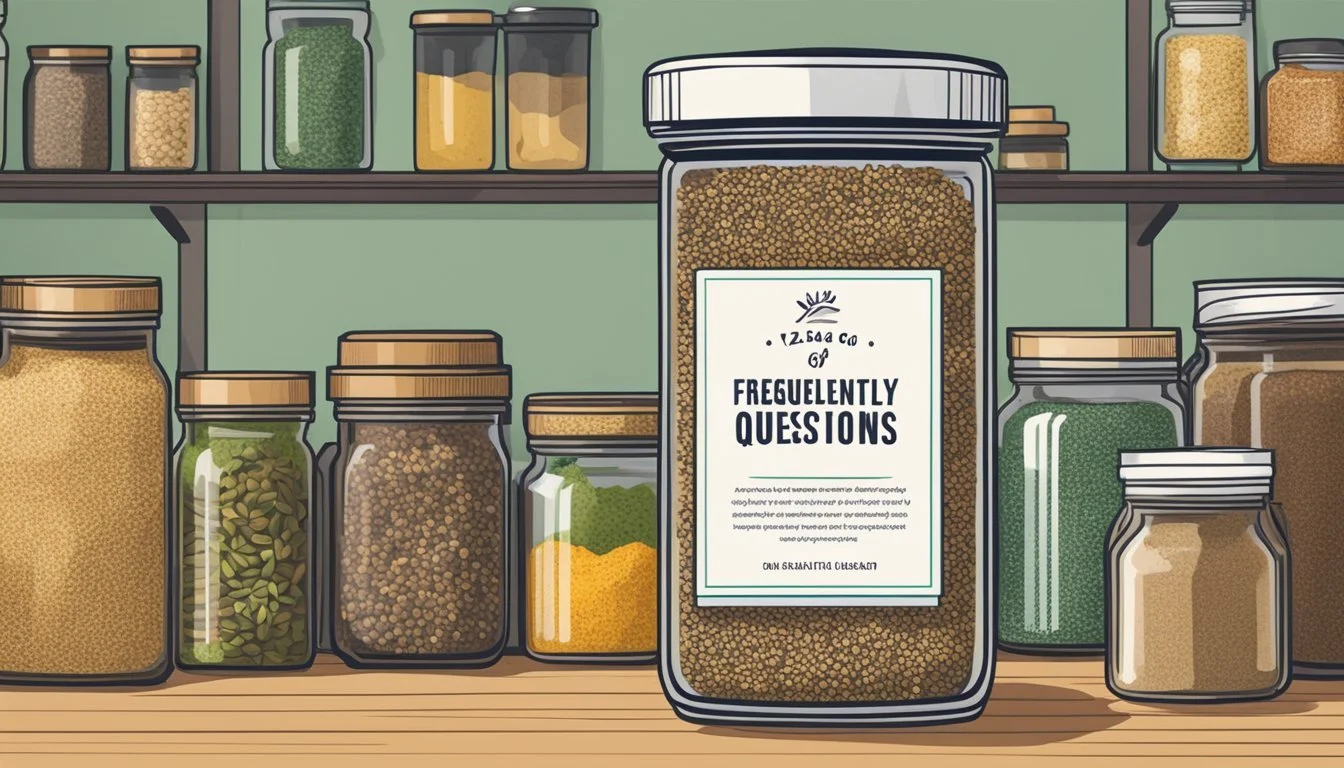Does Za'atar Go Bad?
Shelf Life and Storage Tips
Does za'atar go bad? The question might intrigue many who love this Middle Eastern spice blend. Za'atar, a mix typically containing thyme, marjoram, sesame seeds, sumac, and sometimes oregano, is valued for its unique and bold flavors. While za'atar doesn’t necessarily spoil, its potency and aroma can decline over time.
Storing za'atar correctly is key to maintaining its freshness. An airtight container kept in a cool, dark place away from direct sunlight and moisture will help preserve the vibrant flavors that make za'atar special. Proper storage ensures you enjoy the full depth of this spice blend, which is vital for various Middle Eastern dishes.
Not only does za'atar elevate meals, but it also boasts numerous health benefits, such as soothing inflammation and boosting cognitive functions. Given its versatility and nutritional perks, ensuring your za'atar remains fresh is essential for any culinary enthusiast.
History and Origin
Za'atar is a spice mix with roots that stretch back to ancient times. It holds a special place in Middle Eastern culture and cuisine. Mentions of za'atar can be found in old Egyptian texts and even in the Bible.
The name "za'atar" refers both to the herb itself and the blend it forms with other ingredients like sesame seeds, sumac, and salt.
Za'atar's primary herb, Origanum syriacum, grows in the Levant region, particularly in Lebanon, Israel, Palestine, and Syria. These regions have long been known for their rich culinary traditions and aromatic spice blends.
In Middle Eastern culture, za'atar is more than just a seasoning. It is often associated with health benefits and used in traditional dishes and special occasions. Many believe its consumption can boost mental clarity and overall health.
Za'atar's preparation has remained largely consistent over the centuries. Freshly harvested herbs are dried and crushed, then mixed with toasted sesame seeds and sumac. Sometimes, other herbs like thyme, oregano, or marjoram are added to enhance its flavor profile.
Despite the variations in its recipe, the use of za'atar dates back to ancient times, illustrating its lasting importance in Middle Eastern gastronomy.
Each region has its own unique twist on the za'atar blend, reflecting local tastes and culinary practices. Whether sprinkled on bread, mixed with olive oil, or used as a seasoning, za'atar continues to be a beloved and essential component in Middle Eastern kitchens.
Understanding Za'atar
Za'atar is a versatile and traditional spice blend rooted deeply in Middle Eastern and Mediterranean cuisines. It comprises a mix of herbs and spices, each contributing unique flavors and textures, and can vary significantly from region to region.
Defining Za'atar
Za'atar is a spice blend that typically includes thyme, oregano, marjoram, sumac, and sesame seeds. The combination of these ingredients creates an earthy, herbal flavor with a hint of citrus from the sumac and a nutty texture from the sesame seeds.
In Middle Eastern and Mediterranean kitchens, za'atar is often used to season meats, vegetables, and bread. It is also mixed with olive oil and used as a dip or spread.
Common Ingredients
The main ingredients in za'atar are thyme, oregano, sumac, and sesame seeds. Thyme offers a subtle herbal note, while oregano adds a robust, slightly bitter flavor. Sumac, a deep red berry, imparts a lemony tartness that brightens the blend. Sesame seeds contribute a toasted, nutty flavor and a bit of crunch.
Additional herbs like marjoram may be included, and some blends add salt for enhanced flavor. Each ingredient must be fresh to maintain the blend's vibrant taste and aroma.
Variations Across Cultures
Different cultures have their own versions of za'atar, reflecting local tastes and available ingredients. In Lebanese cuisine, za'atar may lean heavily on thyme and sumac. Jordanian versions might add more sesame seeds and include a touch of salt.
In Israeli cuisine, it could feature a higher proportion of oregano and marjoram. These regional variations can greatly affect the blend’s flavor profile, making za'atar a versatile and dynamic ingredient in Middle Eastern and Mediterranean cooking. This adaptability ensures that no two blends are exactly alike, celebrating the rich culinary diversity of the regions where za'atar is cherished.
Culinary Uses of Za'atar
Za'atar is a versatile spice blend integral to Middle Eastern and Mediterranean cuisines. It enhances the flavors of numerous dishes, from traditional fare to modern twists, and pairs excellently with various ingredients.
Za'atar in Traditional Dishes
In many Middle Eastern households, za'atar is a staple for breakfast, often combined with olive oil and spread on flatbread known as man’oushe or mana'eesh. This preparation can also be sprinkled on hummus or labneh for a flavorful enhancement.
Za'atar is also used as a seasoning for chicken and grilled meats, imparting a unique taste when marinated or rubbed before cooking. In salads, mixing za'atar with olive oil and lemon juice creates a simple yet aromatic salad dressing.
Innovative Za'atar Recipes
Modern culinary enthusiasts have incorporated za'atar into various innovative recipes. It adds depth to avocado toast and can be sprinkled on egg dishes for an elevated breakfast experience.
For a creative appetizer, blend za'atar with labneh, fresh garlic, feta cheese, and olive oil to make a creamy dip served with pita bread or vegetables. In baking, za'atar can flavor bread or be included in a za'atar and olive focaccia.
Experimenting with za'atar in different cuisines has led to unique combinations like Israeli-inspired corn with za'atar, which merges traditional flavors with globally loved staples.
Pairings and Combinations
Za'atar’s bold flavors pair well with several ingredients. It complements dairy products like feta and labneh, contrasting their creaminess with its hearty and tangy notes. Olive oil is another excellent pairing, highlighting za'atar’s herbal qualities.
In salads, mixing za'atar with lemon and olive oil enhances vegetables, particularly when combined with chickpeas, tomatoes, and cucumbers. For meat dishes, a za'atar rub or marinade on chicken or lamb ensures an infusion of its distinctive taste.
Pairing za'atar with grilled meats brings out a smoky aroma, marrying the herbaceous and nutty flavors seamlessly, creating a compelling taste experience.
Quality and Freshness
The freshness and quality of za'atar are vital to its rich flavor and aroma. Proper storage techniques significantly affect its longevity and potency.
Identifying Fresh Za'atar
Fresh za'atar has a vibrant smell and a rich, earthy taste. The herb mixture should be bright in color, suggesting the presence of fresh thyme, sumac, and sesame seeds. When checking for freshness, look for clearly defined, fragrant ingredients.
If the za'atar appears faded or has a musty odor, it is likely past its prime. Freshness indicators include a strong scent and bold flavors. Ensure the ingredients are visible and not clumped together, which can indicate moisture has compromised quality.
How to Store Za'atar
To maintain the quality and freshness of za'atar, store it in an airtight container. This prevents exposure to air, which can degrade its flavor and aroma. Place the container in a cool, dark place, such as a pantry.
Light and moisture are the enemies of spice freshness. Avoid storing za'atar near the stove or any heat sources. Some enthusiasts suggest refrigeration to further preserve its quality, especially for long-term storage.
Regularly cleaning out the spice cabinet helps in maintaining the overall quality of your spices and seasonings. Replace any faded or outdated mixtures to keep your culinary creations flavorful.
Nutritional Profile
Za'atar is not only a flavorful spice blend but also offers a rich nutritional profile. It is known for its health benefits and the variety of vitamins and minerals it contains.
Health Benefits
Za'atar is recognized for its antioxidant properties, which help protect the body's cells from damage. This spice blend can offer anti-inflammatory benefits, which are crucial for reducing chronic inflammation and promoting overall health. Some users find that za'atar can assist in digestion and may boost cognitive function.
Containing herbs like hyssop and thyme, za'atar is often considered beneficial for strengthening the immune system. There's also evidence suggesting it can contribute to heart health and regulate blood sugar levels. These diverse health benefits make za'atar a valuable addition to a balanced diet.
Vitamins and Minerals
The nutritional value of za'atar is enhanced by its rich content of essential vitamins and minerals. Per 100 grams, za'atar provides approximately 290 calories and 25 grams of total fat, including 3.5 grams of saturated fat. It is an excellent source of calcium, essential for maintaining strong bones and teeth.
Za'atar also contains vitamin C, which is important for the immune system and skin health. Other vitamins present include vitamin A and vitamin K, which aid in vision and blood clotting, respectively. The blend often includes iron and magnesium, contributing to energy production and muscle function.
Nutritional Summary
Nutrient Amount per 100g Calories 290 Total Fat 25g Saturated Fat 3.5g Calcium High Vitamins (A, C, K) Present in varying amounts Iron Moderate Magnesium Present
This table highlights the key nutrients in za'atar and their approximate amounts, providing essential information for those looking to incorporate it into their diet.
Frequently Asked Questions
This section addresses common concerns about the shelf life of za'atar and how to ensure it remains safe and flavorful for consumption.
Shelf Life and Spoilage Indicators
Za'atar, a popular Middle Eastern spice blend, contains various dried herbs and sometimes sesame seeds. When stored correctly in an airtight container in a cool, dark place, it can maintain its flavor for several months.
Proper storage is crucial. Exposure to light, heat, and moisture can cause za'atar to lose its potency and aroma. Spoilage indicators include a faded color, off smell, or a musty odor. If the blend smells stale or has clumped together, its quality has likely degraded.
Safe Consumption Guidelines
To ensure za'atar remains safe for consumption, always use clean utensils when scooping from the container. Avoid letting moisture or contaminants enter. Storing it away from direct sunlight and heat sources helps maintain its integrity.
While za'atar does not necessarily "go bad" the way fresh produce does, keeping it in an airtight container is essential. Some enthusiasts recommend refrigeration for extended freshness.
Following these guidelines will help preserve the spice blend's unique flavors and aromas, ensuring a consistent culinary experience.







